The Kaspa Ecosystem Foundation (KEF) New Website
The Kaspa Ecosystem Foundation (KEF) has officially unveiled the redesigned kaspafoundation.org, providing a refreshed and user-friendly experience for anyone seeking to understand or get involved with the Kaspa ecosystem.

This re-launch represents more than just a visual update. The new site serves as a transparent and accessible hub for KEF's mission, values, and ongoing contributions to Kaspa's growth. Visitors will find a comprehensive overview of the Foundation's initiatives — including research grants, event sponsorships, and strategic partnerships — as well as a documented history of past achievements and collaborations that have supported the Kaspa network.
In addition to showcasing KEF's efforts, the site provides simple, open channels for communication and collaboration. Whether you're a builder, researcher, or potential partner, the new platform is designed to make engagement easier and more intuitive.

The revamped kaspafoundation.org also introduces new features aimed at long-term ecosystem development. These include improved navigation for grant applicants, a streamlined media section with press releases and educational resources, and a regularly updated blog to keep the community informed on KEF-backed initiatives and upcoming events. By bringing these tools and updates together, KEF is not only making it easier to stay connected — it's laying the groundwork for a more coordinated, global effort to accelerate Kaspa's adoption and innovation. Notably, the Foundation has already supported key ecosystem projects such as KasBay, KASPLEX, and KasKeeper, helping to foster a vibrant landscape of applications and infrastructure built on Kaspa.
Pavel from Igra Labs at ETHDam III
Igra Labs co-founder Pavel (@emdin) gave a talk titled "The Minimum Rollup Constraint Theory" at ETHDam III and has since uploaded the video to the Igra Labs YouTube Channel. ETHDam is an annual conference and hackathon in Amsterdam focusing on privacy, security, and AI in the cryptocurrency space. Organized by CryptoCanal, the 2025 edition brought together 600+ developers, researchers, and builders for a 48-hour hackathon and multi-track conference. Rooted in cypherpunk ideals such as censorship resistance and digital ownership, ETHDam fosters innovation through talks, panels, workshops, and side events, including boot camps and trading tournaments.

Igra Labs is building an EVM-compatible, zero-knowledge, based rollup on top of Kaspa's high-throughput BlockDAG consensus. With 15 teams already building on the newly launched DevNet and a TestNet on the way, Pavel positioned Igra as a response to the limitations of current rollup architectures—particularly centralized sequencers and fragmented ecosystems. He argued for shared, decentralized sequencers as the key to enabling atomic composability and true interoperability between rollups.
Pavel criticized the current Layer 2 model, comparing it to web services hosted on AWS, where most rollups are siloed and dependent on fragile bridges. Instead, he advocated for rollups sharing a fast and credible sequencer, such as Kaspa's, which can deliver subsecond finality and MEV resilience. This, he said, would unlock better coordination, shared state, and a unified asset layer—paving the way for a truly interconnected Web3.
Pavel expanded on this idea, noting that in addition to the well-known blockchain trilemma (scalability, security, decentralization), we should now consider a blockchain quadrilemma—with interoperability as the fourth pillar. The internet allows users to work across multiple languages, ecosystems, and applications. He noted, "Shouldn't Web3 be interconnected as well?"

As a solution, Pavel proposed that rollups communicate through modular architecture with a shared sequencer. In this model, a based rollup uses another base layer as a sequencer, enabling atomic composability—so one rollup could call another in a single transaction. This design also mitigates liquidity fragmentation. But for a shared sequencer to be a viable interoperability solution, it must be extremely fast, secure, and credible. That's why Pavel pointed to Kaspa as ideal: Kaspa processes 10 blocks per second (BPS), or roughly 5,000 transactions per second, with a secure and proven consensus mechanism.
When asked how Kaspa's DAG architecture would help Ethereum scale, Pavel explained:
"Super high level: if you use Kaspa BlockDAG as a shared decentralized sequencer for your L2 and also do settlement on Ethereum with zero knowledge—I left out all parts which touch zero-knowledge proofs because the talk would be twice as long—but if you do your proofs on Ethereum, you enjoy Ethereum's security and credibility, and you have a super fast sequencer. Then you can have synchronous atomic composability and finally have the interconnectivity solution, which we're all desperately looking for."
We were thrilled to see Igra Labs representing Kaspa at the ETHDam conference. To learn more about their work, please check out our KASmedia article, An Igra Labs Interview: A Bright Kaspa Future and a Dark Bitcoin Past.
Yonatan Sompolinsky at AusCryptoCon 2024 - YouTube
The YouTube.com/Kaspa channel recently uploaded the talk delivered by Kaspa founder Dr. Yonatan Sompolinsky at AusCryptoCon 2024, held in November at Sydney's International Convention Center. With over 10,000 expected attendees from across the crypto industry, Sompolinsky's presentation, titled "Crypto 2030," offered a deep look into blockchain abstraction, Layer 1 (L1) relevance, and the future of decentralized finance with Kaspa's BlockDAG architecture.

Dr. Sompolinsky opened with a global map of active Kaspa nodes, proudly pointing out Sydney's presence, then dove into the concept of blockchain abstraction: most users only interact with a UI (user interface) and remain unaware of the technical layers underneath (the UX, user experience), such as rollups or sequencing mechanisms. He likened this to online gaming, where casual users ignore latency, but pros are acutely aware of it. In crypto, similar performance metrics exist — such as latency, throughput, and fault tolerance — but Dr. Sompolinsky emphasized one unique metric: resiliency to manipulation by miners or sequencers.
Dr. Sompolinsky continued to explain the significance of increasing the blocks-per-second (BPS) from 1 BPS to 10 BPS, which occurred on May 5, 2025, with the Crescendo hard fork. He also explained that in the future, Kaspa plans to increase this upwards of 100 BPS. Kaspa's blockDAG architecture structures the blocks in parallelism, which differs from Bitcoin but also results in a generalized form of Nakamoto Consensus. While 100 BPS (~100 milliseconds) is indistinguishable from 10 BPS (~10 milliseconds) to the user, it results in significant competition for block sequencers.
This leads to the concept of "Sequences Per Round" (SPR), a new metric that measures the number of independent agents competing to process transactions. Greater SPR, enabled by Kaspa's high block rate (targeting 10–100 blocks per second) and multi-leader consensus, means more competition, reducing manipulation and benefiting users, especially liquidity providers and DeFi traders. Yonatan continued,
"You know this already; you know that a competitive market becomes more competitive, more efficient, as there are more entities that participate in the competition."
In contrast to Kaspa, Bitcoin and Ethereum run single-leader consensus, which ultimately results in a monopoly of sequencing.
Another key point raised in the talk was how on-chain data is only as decentralized and secure as the off-chain data brought on-chain through oracles. Ideally, one would want to aggregate as many price feeds as possible.
Dr. Sompolinsky concluded his talk by saying:
"So the answer is yes, L1s are still relevant. Sequencing layers are the most important aspect [of crypto], and they will remain relevant forever. You can abstract the UI of this, but you cannot abstract the UX, [as] you will always need to inform the user of what's going on behind the scenes-- what they should expect in terms of other players spoofing them, front-running them, or speed of finality."
In summary, while the UI may conceal blockchain complexity from users, the UX still relies on the underlying sequencing layer, which remains crucial for performance, fairness, and trust. Kaspa's unique architecture positions it to meet these future demands head-on. Check out Dr. Sompolinsky's talk, linked above.
The ZET-EX is on the Way
In a recent tweet, the Kaspa Industrial Initiative (KII) unveiled a significant step forward — a glimpse of the Zero Emission Trading Exchange (ZET-EX) platform. The shared image displayed an active user interface, suggesting that ZET-EX is moving beyond the conceptual phase toward becoming a functioning system set to transform the carbon trading market.
ZET-EX is designed to revolutionize the approach to carbon markets and the trading of sustainable energy assets. With global carbon market projections expected to surpass $2 trillion by 2030, the need for standardization, efficiency, and transparency has never been greater. Unfortunately, today's carbon markets suffer from a lack of clear protocols, inconsistent certification systems, and fragmented infrastructure, all of which hinder growth and erode trust.
To address these challenges, ZET-EX is being built in collaboration with global partners and is deeply aligned with the mission of the Zero Emission Traders Alliance (ZETA). Co-founded by Paul van Son, ZETA aims to establish clear trading standards and protocols for low- to sub-zero-carbon-emission products. ZET-EX serves as a practical extension of this vision, with an initial focus on the MENA region (Middle East and North Africa).
A summary of ZET-EX is shared below, thanks to Captain Sats.

Moreover, according to the Kaspa Kii roadmap, the platform is being developed and tested, with the launch of the ZETA token and DEX expected in Q4 2025.
This is just the beginning. With the platform in development, the ZET-EX initiative represents a pivotal step in Kaspa’s growing real-world utility and further solidifies the role of the Kaspa Industrial Initiative in bridging blockchain with global climate solutions. To read more about Kaspa Kii and their initiatives, please see our article, A Clean Kaspaian Future: Desert Energy, Clean Energy Trading, and Kaspa Kii.
US SEC Chair, Paul Atkins Calls for Clarity for Digital Assets
On May 20, 2025, SEC Chair nominee Paul Atkins testified before the House Financial Services and General Government Subcommittee, outlining his priorities for digital asset regulation. Drawing from his experience in the industry since 2017, Atkins stressed the urgent need for regulatory clarity to support innovation and protect investors.
"I worked to help develop best practices for the digital assets industry and saw firsthand how ambiguous or nonexistent regulations created uncertainty and inhibited innovation," Atkins said. "That lack of regulatory framework also invites fraud."
Atkins pledged to move away from "regulation by enforcement" and instead implement rulemaking through open, public processes. "The Commission will utilize its existing authorities to set fit-for-purpose standards for market participants," he explained.
He also highlighted the launch of the Crypto Task Force, co-led by Commissioners Hester Peirce and Mark Uyeda, as a critical step in breaking down policymaking silos within the SEC. "The Crypto Task Force exemplifies how our policy divisions can come together to expeditiously provide long-needed clarity and certainty to the American public," he said.
Praising Peirce's leadership, Atkins added, "I am confident that Commissioner Peirce...is the right person to lead the Crypto Task Force's effort to come up with a rational regulatory framework for crypto-asset markets."
So far, the task force has held four roundtables on token classification, trading regulation, custody, and tokenization, with a fifth roundtable focused on decentralized finance (DeFi) scheduled for the near future. "I look forward to the input from industry and additional public feedback," Atkins noted.
He concluded by emphasizing the broader potential of blockchain innovation: "Entrepreneurs across the United States and around the world are harnessing blockchain technology to modernize aspects of our financial system. I anticipate benefits from this market innovation for efficiency, cost reduction, transparency, and risk mitigation."
Atkins' testimony signals a shift toward clearer, more collaborative crypto regulation, with a focus on both investor protection and innovation.
Crypto Odie Contines Kaspa Speed Testing
Crypto Odie continued his mission to prove Kaspa is the fastest cryptocurrency network, using 12 different phones to perform transactions live. (Check out last week’s Weekly Knight to see his earlier speed tests against coins like XRP, SOL, and ETH.)
This week, Kaspa went head-to-head with DOT, NEAR, and XNO. The results? Kaspa left the competition in the dust with blazing-fast 3-second transaction times. In comparison, DOT lagged at 30 seconds, NEAR took 7 seconds, and XNO clocked in at 6 seconds.
Crypto Odie also ran a close comparison between KAS and HYPE. To ensure fairness, he conducted three separate transactions and averaged the results. Once again, Kaspa came out on top as the fastest crypto at 1.86 seconds and Hyperliquid at 2.78 seconds.
With each test, Crypto Odie continues to highlight Kaspa’s unmatched speed and consistency. As the competition heats up, Kaspa remains the crypto to beat in real-world performance.
Enjoyed reading this article?
More articles like thisComments
No comments yet!




